When you think about cosmetic surgery, what often comes to mind is the facelift. For years, facelifts have been the gold standard in facial rejuvenation surgery to address sagging skin in the cheek, neck, and jawline areas. It’s generally assumed that facelifts require a long recovery process. In the past, this prolonged recovery time was afforded by predominantly wealthier people.
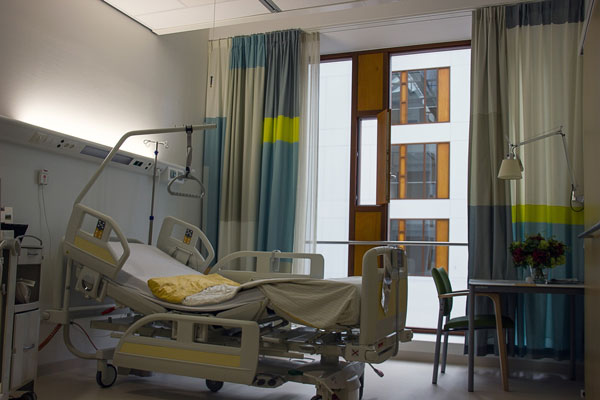
Facelift was considered a surgical procedure for wealthy people due to the cost and long recovery process
When I was training in facial cosmetic surgery, facelifts involved general anesthesia and an overnight hospital stay. It also meant weeks of uncomfortable swelling that required large dressings and drains. While observing this process, I began thinking of ways to make facelift surgery less difficult and stressful for patients. I wanted my patients to get the most out of having a facelift procedures without compromising on quality and longevity of results. In the course of my practice, I’ve developed methods and systems, which allow my patients to enjoy an improved appearance with minimal risk and minimal downtime.
General Anesthesia vs. Local Anesthesia
One significant cause of longer facelift recovery is having general anesthesia. Under general anesthesia, a patient is completely unconscious and paralyzed which requires a breathing tube in the throat and a mechanical respirator to keep you alive. General anesthesia carries risks and complications which are specific to this type of anesthesia. Recovering from general anesthesia can be uncomfortable and prolong the recovery time
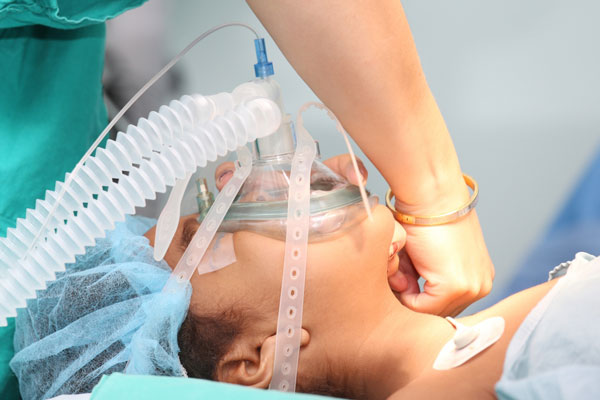
Patient under general anesthesia needs a respirator for breathing during surgery
In many cases, recovering from the effects of general anesthesia is more difficult than recovering from the actual surgery. After surgery, facelift patients can still suffer from the effects of general anesthesia such as nausea, vomiting, and memory loss. Oftentimes, patients are required to stay overnight at a recovery facility for monitoring and postoperative nursing care.

Facelift patients under general anesthesia take longer recovery time and require extensive facial and neck bandages (this is not an actual patient)
Facelift patients often also require extensive facial and neck bandages, as well as drains that require regular dressing changes.
In my practice, I use local anesthesia with LITE™ IV sedation when performing facelift surgery. LITE™ IV sedation allows my patients to be in a relaxed state throughout the procedure. They are generally more comfortable and feel good after surgery. We perform surgery at our own operating facilities within our own office. Our facilities are managed like hospital facilities which reflects our commitment to safety, sterility and maintaining appropriate emergency equipment should the need arise.
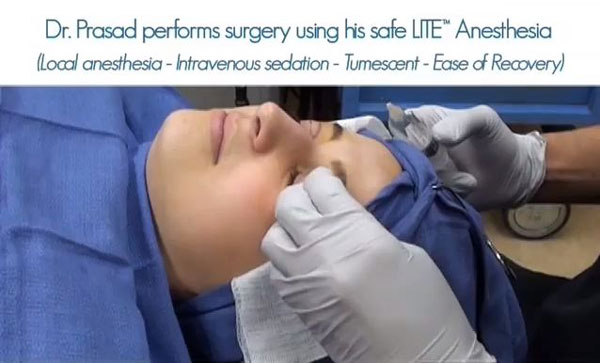
Dr. Amiya Prasad uses local anesthesia with LITE™ IV sedation when performing facelift surgery. A light facial dressing is used and you can return home shortly after surgery
After surgery is completed, a light bandage is placed without the need for any drains. We typically monitor our patients for 1-2 hours before they go home. A responsible adult is necessary to accompany you going home.
What To Do After A Facelift?
Post-op care instructions involve putting antibiotic ointment where sutures are placed.
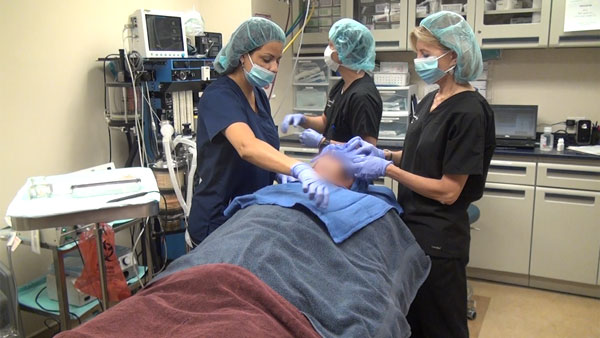
Antibiotic ointment is placed on the sutures after surgery
Antibiotic ointment is used for about 3 days to minimize the risk of allergic reaction to the antibiotic. A petrolatum-based ointment is used after 3 days to maintain a moist environment for optimal wound healing. Pain medication are typically not necessary. Sutures are removed after one week and patients can return to work in about a week to 2 weeks after surgery.
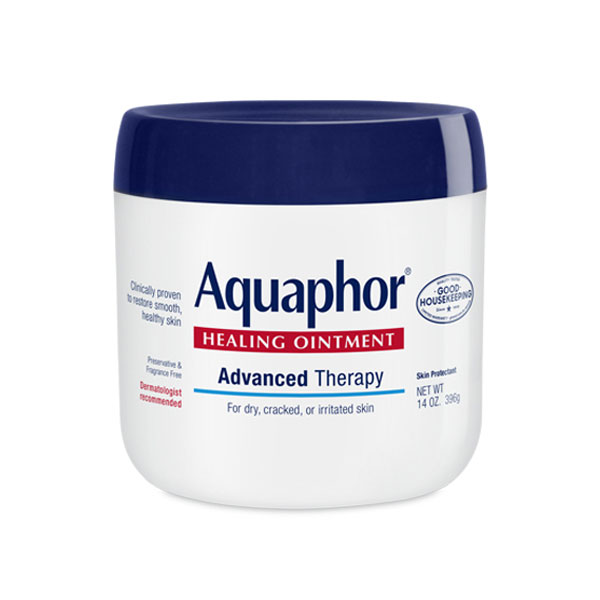
Over the counter petrolatum based ointment helps incision healing
Whether it’s a limited mini lift to an extended face and neck lift surgery, there is no compromise in the quality of the surgery to insure the best results. The deeper tissue often referred to as the superficial musculoaponeurotic system, is addressed the same way as any facelift procedure typically performed under general anesthesia. I perform the full range of facelifts with this approach, from short scar mini lifts with SMAS plication, SMAS flaps or imbrication as well as deep plane facelifts.
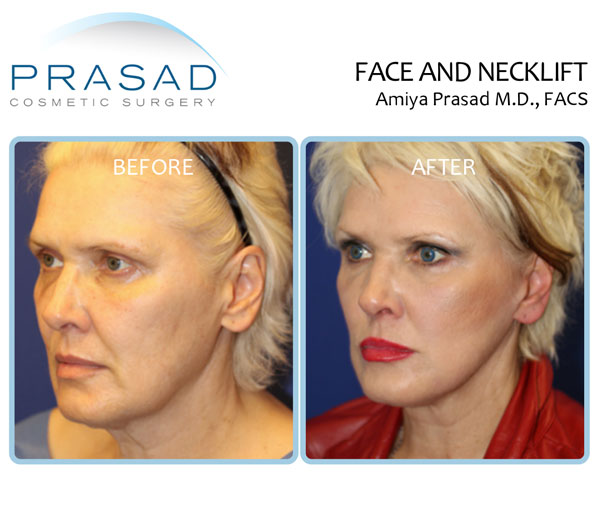
Dr. Amiya Prasad performs different types of facelifts such as short scar mini lifts, SMAS and deep plane facelifts
Quick Recovery Facelift
An important aspect of healing after facelift surgery is related to the length of the incision. Traditional facelifts often have longer incisions that go behind the ear and into the hair. In a procedure with a shorter scar such as a MACS facelift, the incisions can extend to the outer corner of the eyelid and be conspicuous.
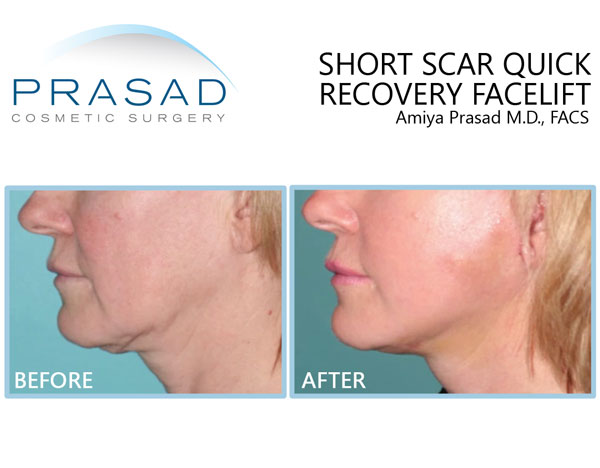
Length of incision is a contributing factor to facelift surgery recovery. Quick Recovery Facelift has shorter incisions that can look good after about a week
Incisions for the Quick Recovery facelift are typically barely noticeable. I design the placement with you so you understand the reasons for the design and know where the incisions will be before you have your procedure.
Short Scar and Deep Plane Facelifts
The short scar facelift I perform is not a short-cut procedures. I typically choose this type of facelift for people who have minimal neck skin excess as well a people who’ve had previous facelift surgery.
Some patients are candidates for deep plane facelift surgery. The term “deep plane’ refers to a level of tissue and is a technical term. It does not mean that it’s a better procedure as is often claimed by surgeons trying to market themselves. I discuss with you the option of having a deep plane facelift and the potential benefits of this approach.
Facelift Recovery Photos
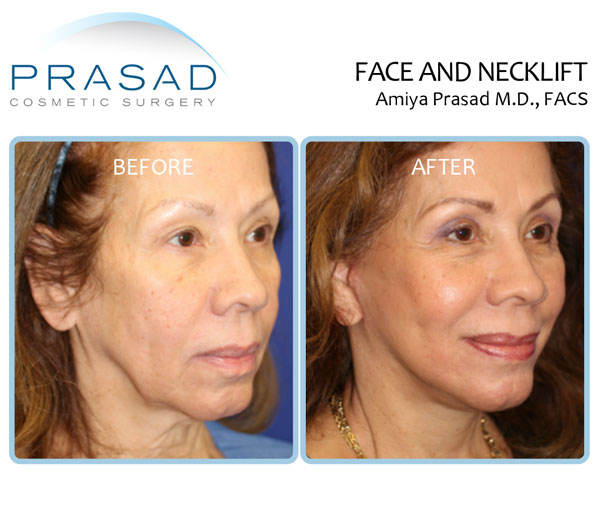
Deep plane face and neck lift is a procedure more suited for patients who have significant skin laxity in the neck and under the chin
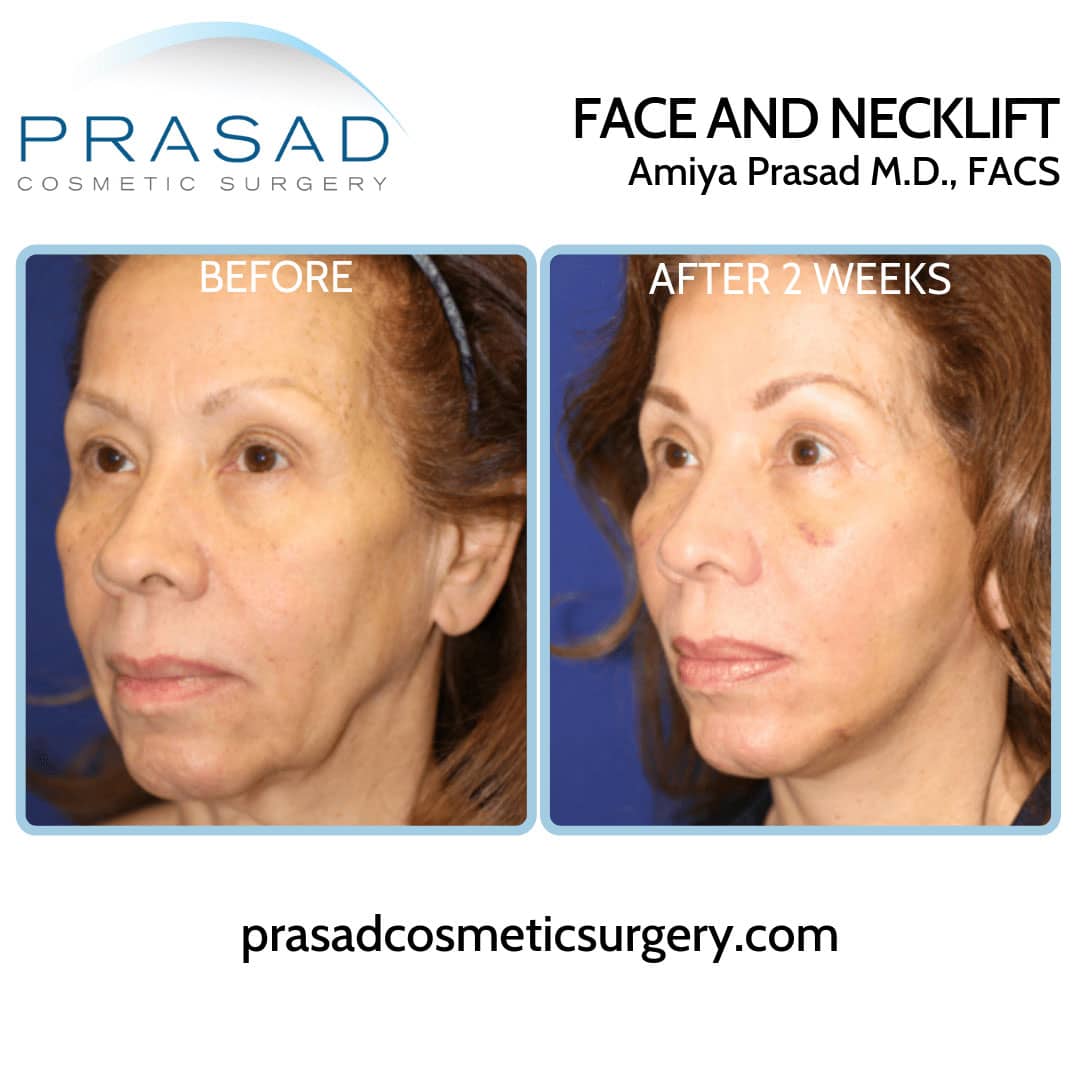
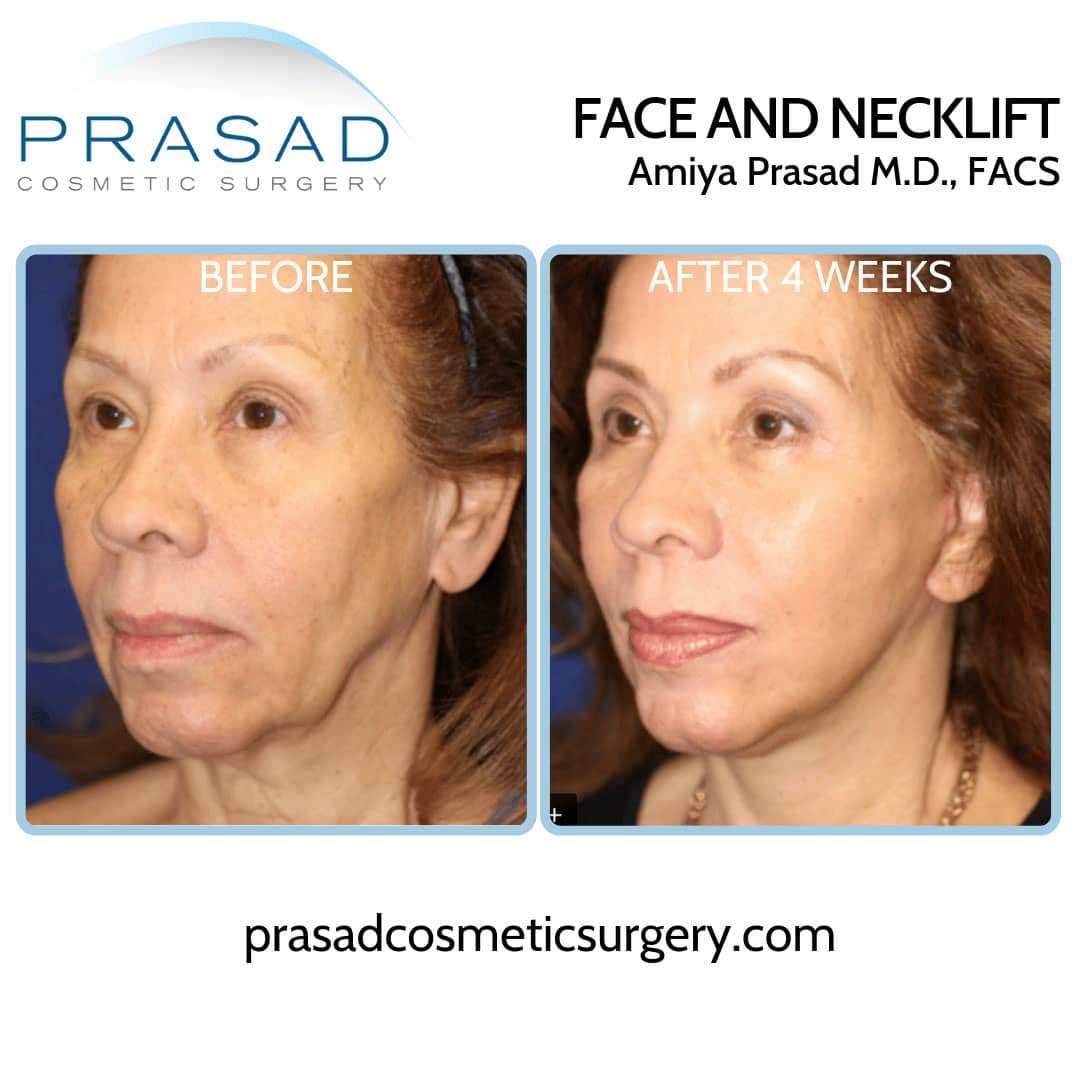
The type of incision is based on the specific objectives of the surgery. Generally, if there is a significant amount of excess neck skin, a face and necklift surgery is appropriate.
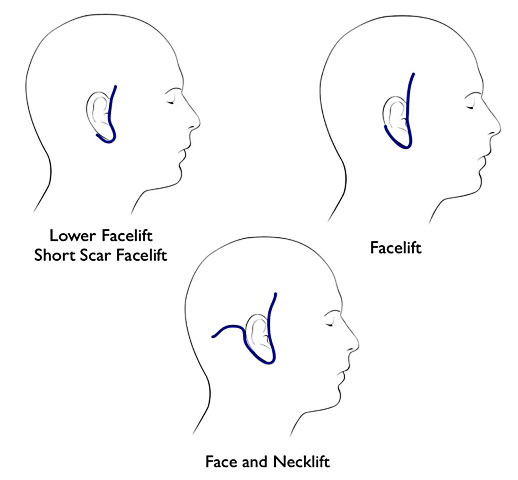
Face and necklift incisions are customized to the needs of the individual patient
Some doctors may claim to only perform deep plane facelifts exclusively, implying that they know techniques that other surgeons don’t. Surgeons who are trained formally such as through The American Board of Cosmetic Surgery are trained in the full spectrum of facelift surgery including deep plane facelift.
I routinely use regenerative technology such as PRP or platelet rich plasma. I routinely apply a regenerative wound healing material called extracellular matrix or Acellular matrix. This technology enhances healing so that I often see in about a month the incisions are usually virtually imperceptible.
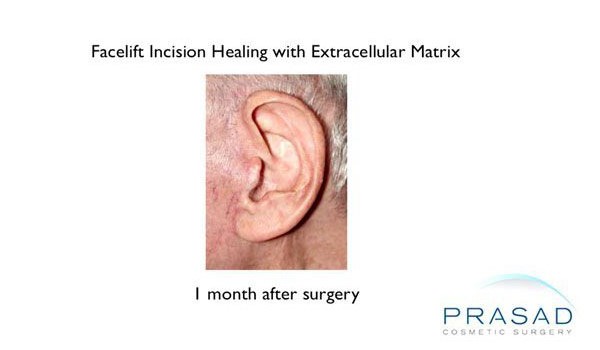
Regenerative medicine technology with acellular matrix enhances healing so that 1 month after the incisions can be practically unnoticeable
A Natural Aesthetic Style
A quick recovery time is important as is the aesthetic outcome. Whether it’s eyelid surgery or facelift surgery, I believe in a natural aesthetic. I strive to maintain the character of the face so my patients look like themselves after any procedure. My facelift and eyelid surgery patients often tell me how much they like looking like younger versions of themselves.
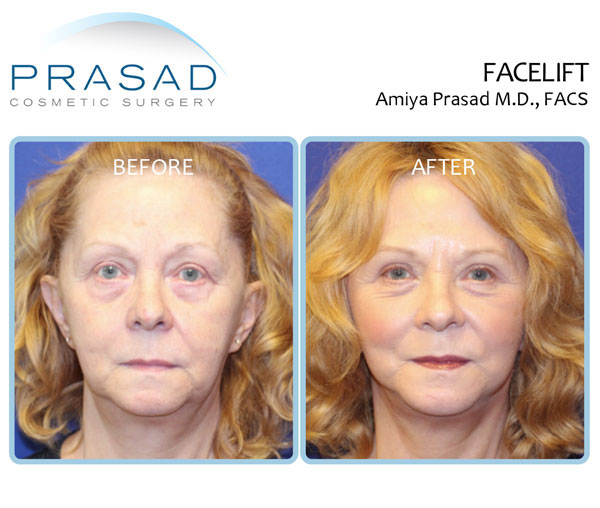
Dr. Prasad philosophy is that facelift patients should look like younger versions of themselves
